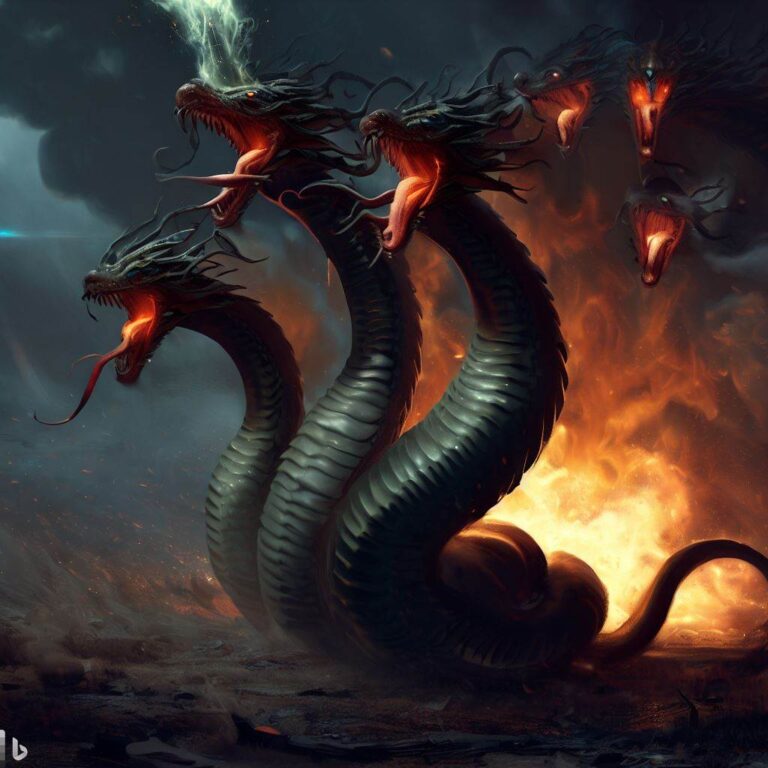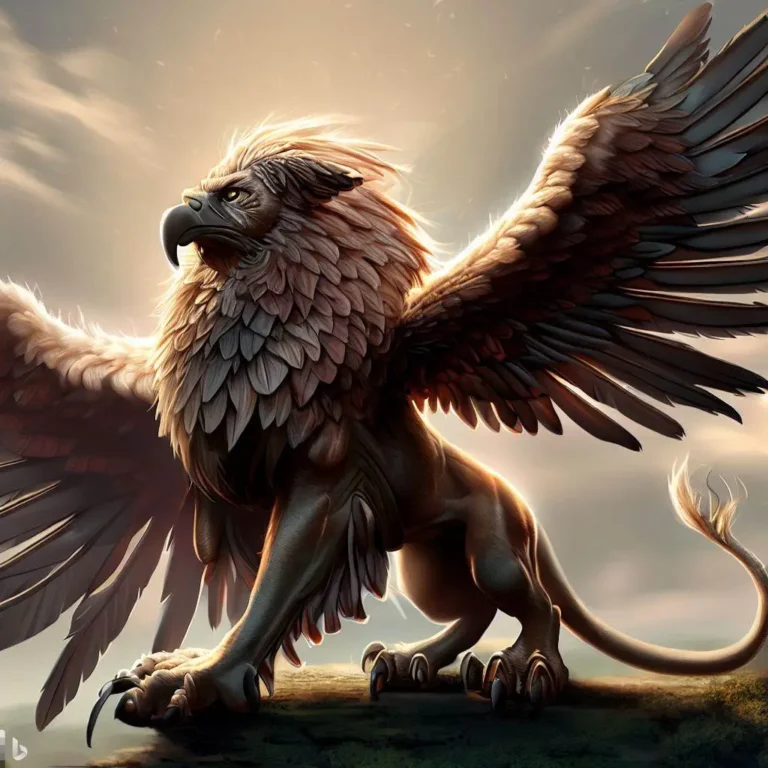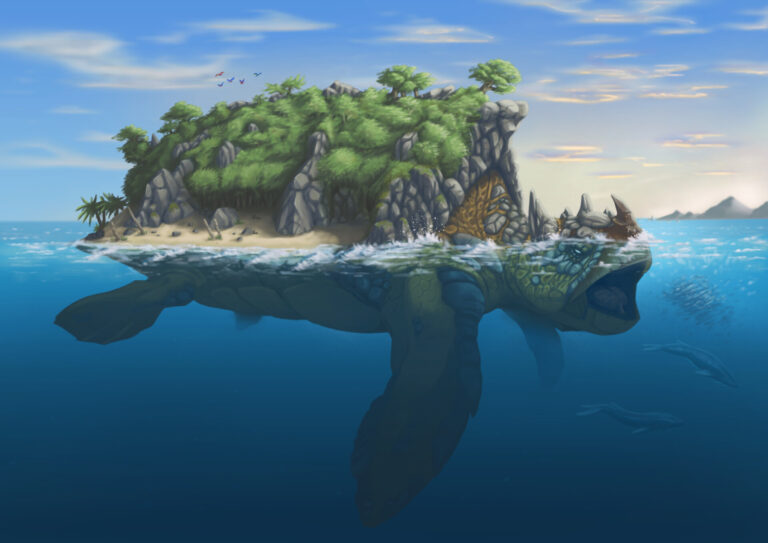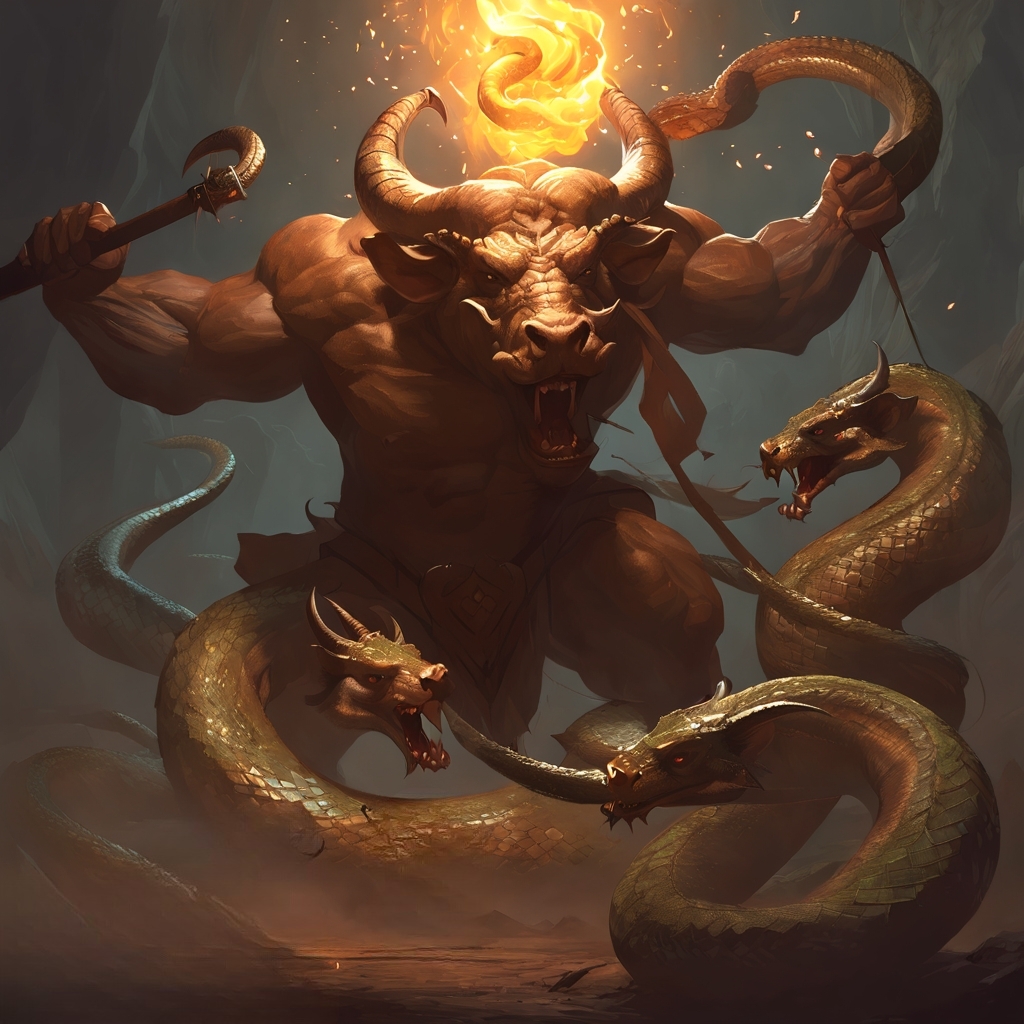
The Minotaur and the Lernaean Hydra are two of the most legendary monsters from classical Greek mythology. With the body of a man and the head of a bull, the Minotaur possessed great strength and brute force.
The Hydra was a many-headed serpent with poisonous breath and blood, and the ability to regrow its heads if decapitated. A battle between these two mythic beasts would certainly be epic. But who would emerge victorious if the Minotaur and Hydra went head to head?
Although both monsters boast formidable powers, the Hydra’s capacity to regrow its heads after decapitation likely gives it a key advantage over the strictly close-quarters Minotaur.
Let’s examine the mythical origins and abilities of each opponent to analyze how an arena match between the Minotaur and Hydra might play out.
ads content
The Mythical Origins of the Minotaur
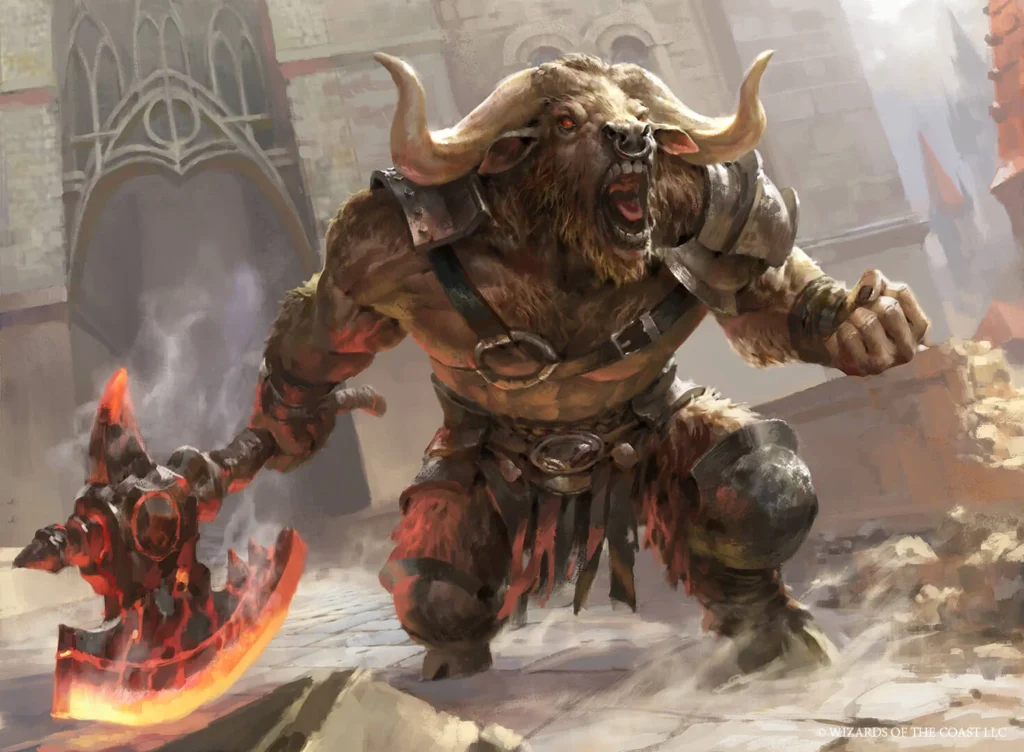
Image credits:deviantart.com
The Minotaur was the offspring of the Cretan queen Pasiphae and a beautiful white bull given to her husband King Minos by the Greek god Poseidon.
Poseidon gifted the bull on the condition that it would be sacrificed back to him, but Minos decided to keep it for himself due to its beauty. As punishment, Poseidon cursed Pasiphae to fall in love with the bull.
Daedalus, a skilled craftsman living in Crete, constructed a hollow wooden cow covered in real cowhide for Pasiphae so that she could mate with the bull.
Their offspring was the Minotaur – a creature with the head and tail of a bull, but the body of a man.
When the Minotaur was born, King Minos was embarrassed but did not want to kill the creature, as it was his wife’s son.
He consulted the oracle at Delphi, who advised him to build an intricate labyrinth to contain the Minotaur. The labyrinth was designed by Daedalus and constructed underneath King Minos’ palace in Crete.
The Minotaur remained trapped in this labyrinth, demanding human sacrifices as its source of food. The monster met its end when the Athenian hero Theseus volunteered to enter the labyrinth and slay the beast.
With the help of Minos’ daughter Ariadne, Theseus succeeded in killing the Minotaur and made it back out of the maze alive.
With the strength and horns of a mighty bull, the Minotaur certainly makes for a dangerous opponent. However, its lack of ranged attacks beyond charging with its horns makes it solely a brute force close quarters combatant.
The Hydra: A Formidable Adversary
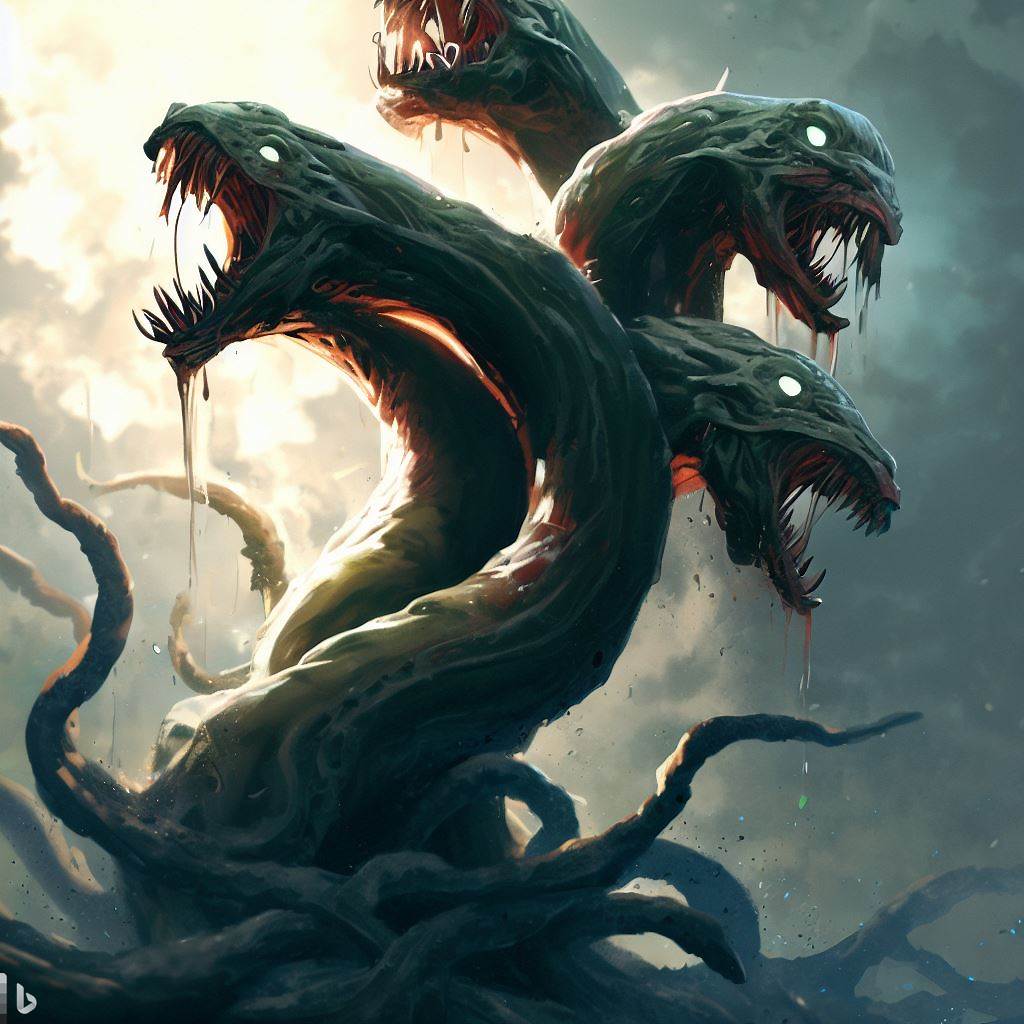
In Greek mythology, the Hydra was a terrifying multi-headed serpent that dwelled in the swamps of Lerna. It was said to be the offspring of the monsters Typhon and Echidna. The Hydra had poisonous breath and blood, and many heads that would regrow rapidly if decapitated.
The second of the Twelve Labors of Hercules was to defeat the dreaded Lernaean Hydra. When Hercules cut off one of its heads, two more grew back in its place.
With the help of his nephew Iolaus, Hercules cauterized each decapitated neck stub with fire to prevent head regrowth.
Eventually, Hercules succeeded in destroying the Hydra, although one immortal head remained, which Hercules buried under a heavy rock.
The Hydra’s ability to quickly regenerate its heads made it extremely difficult to defeat. Even severing multiple heads at once proved futile, as the beast could regrow them rapidly.
With its venomous ranged attacks and capacity to regrow heads, the Hydra possesses abilities that give it advantages the Minotaur lacks. The Minotaur has only its brute strength and horns to rely on in close quarters.
Head to Head: How the Fight Could Play Out
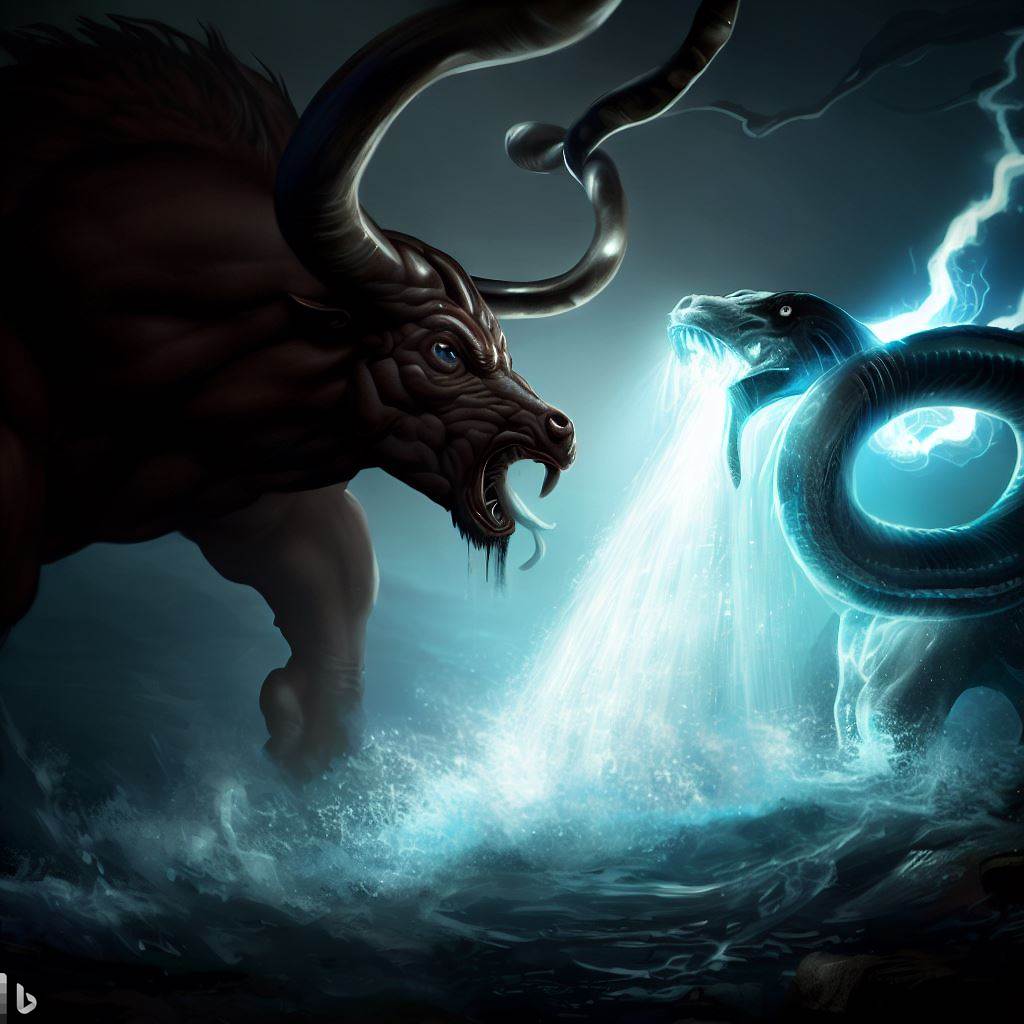
If the Minotaur and Hydra were to face off in combat, where might such a battle take place? The labyrinth where King Minos imprisoned the Minotaur could serve as an arena, but the Hydra’s swamp home would also make for a fitting stage.
In the labyrinth arena, the Minotaur would likely charge swiftly with its sharpened horns towards the Hydra.
However, the Hydra could keep its distance and use its long necks for venomous ranged attacks from afar. With no long distance moves, the Minotaur would need to get in close to attack the Hydra’s heads with its horns.
In the Hydra’s swamp lair, the Minotaur would have more difficulty charging with less sure footing. Meanwhile, the Hydra would be in its element and able to move adeptly through the wet terrain.
Regardless of the battlefield, here’s how the fight could go:
- The Minotaur starts by charging towards the Hydra to gore it with its horns.
- The Hydra keeps its distance and sprays the Minotaur with venom, weakening the beast.
- Enraged, the Minotaur manages to rip off one of the Hydra’s heads with its horns. But two more quickly grow back!
- The Minotaur persists in decapitating heads, but more keep regrowing. Meanwhile, the venom continues weakening the Minotaur.
- Finally, too exhausted from the venom and head regrowth, the Minotaur succumbs and the Hydra moves in for the kill.
The Minotaur’s lack of long range attacks coupled with the Hydra’s ability to rapidly regrow heads after decapitation give the Hydra an edge in this matchup.
Let’s analyze the advantages and disadvantages of each mythical beast in more detail.
The Minotaur’s Strengths and Weaknesses:
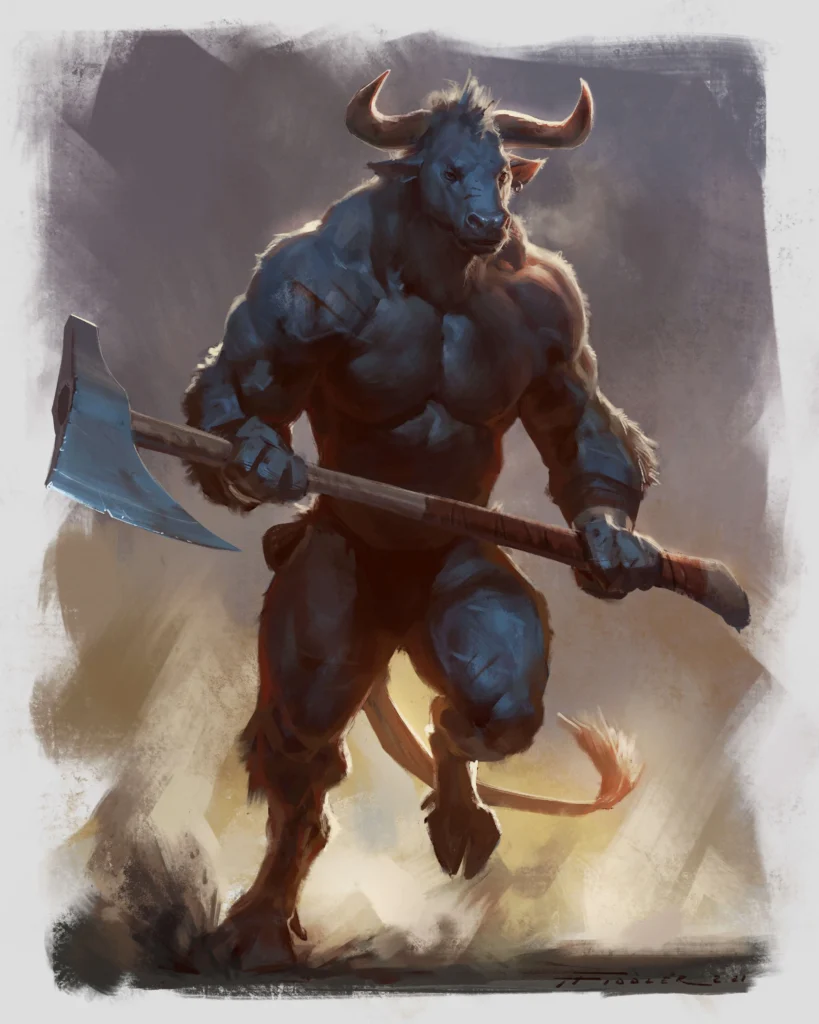
Image credits:deviantart.com
Strengths
- Brute force from bull strength
- Charging with sharp horns for goring
- Tough hide and stamina
Weaknesses
- No long range attacks
- Susceptible to venom/ranged attacks
- Little strategy beyond charging with horns
- No head regrowth if decapitated
The Hydra’s Strengths and Weaknesses:
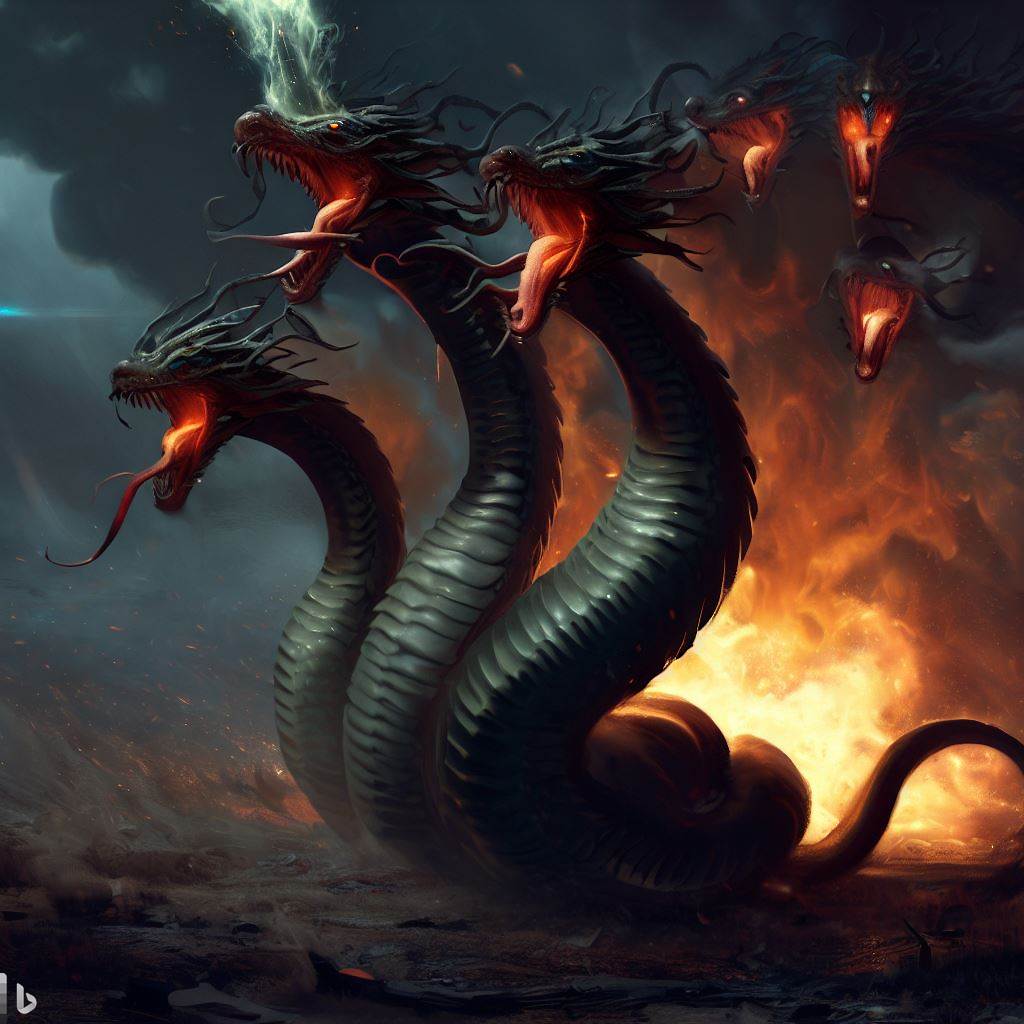
Strengths
- Multiple heads allow for surround attacks
- Rapid head regrowth when decapitated
- Venomous breath and blood can weaken opponents
- Excellent swimming capabilities
Weaknesses
- Vulnerable if heads severed and cauterized
- Slower moving than the Minotaur
- Susceptible to brute force horn goring attacks
The Hydra Has the Edge
In a battle between the Minotaur and the Hydra, the Hydra’s capacity to regrow its multiple heads after decapitation gives it the most significant advantage.
The Minotaur relies solely on its close quarters horn goring and brute strength. While it may successfully rip off some of the Hydra’s heads with its horns initially, more will just grow back in their place.
Meanwhile, the Hydra can launch ranged venomous attacks from a distance to weaken the Minotaur. Even if the Minotaur manages to temporarily incapacitate the Hydra by decapitating several heads at once, new ones will swiftly regenerate.
The Minotaur simply lacks an effective long-term solution for the Hydra’s head regrowth abilities.
In summary, while the Minotaur brings formidable brute strength to an arena battle, the Hydra’s venom and rapid head regrowth give it the capacity to outlast and overwhelm the Minotaur.
The Minotaur has no counter for the Hydra’s key advantage of head regeneration. The Hydra’s abilities make it the likely victor in a combat matchup against the legendary Minotaur.
Frequently Asked Questions
Who is stronger between the Minotaur and Hydra?
The Hydra has the advantage due to its ability to regrow heads when decapitated. This gives it an edge over the strictly close-quarters Minotaur.
Could the Minotaur defeat the Hydra?
It’s unlikely given the Hydra’s abilities, but the Minotaur could potentially win with an exhaustive decapitation effort combined with cauterizing the heads so they can’t regrow.
Conclusion
In the world of Greek mythology, both the Minotaur and Hydra were formidable monsters with impressive strengths.
However, when analyzed head to head, the Hydra’s capacity to regenerate its many heads and attack from a distance with venom gives it advantages that allow it to edge out the Minotaur.
Though a battle between these two legends would likely be close, the Hydra’s head regrowth power makes it the likely victor against the bull-headed Minotaur.
Their epic fight would surely be one for the ages, but the many-headed Hydra would probably emerge standing in the end.

